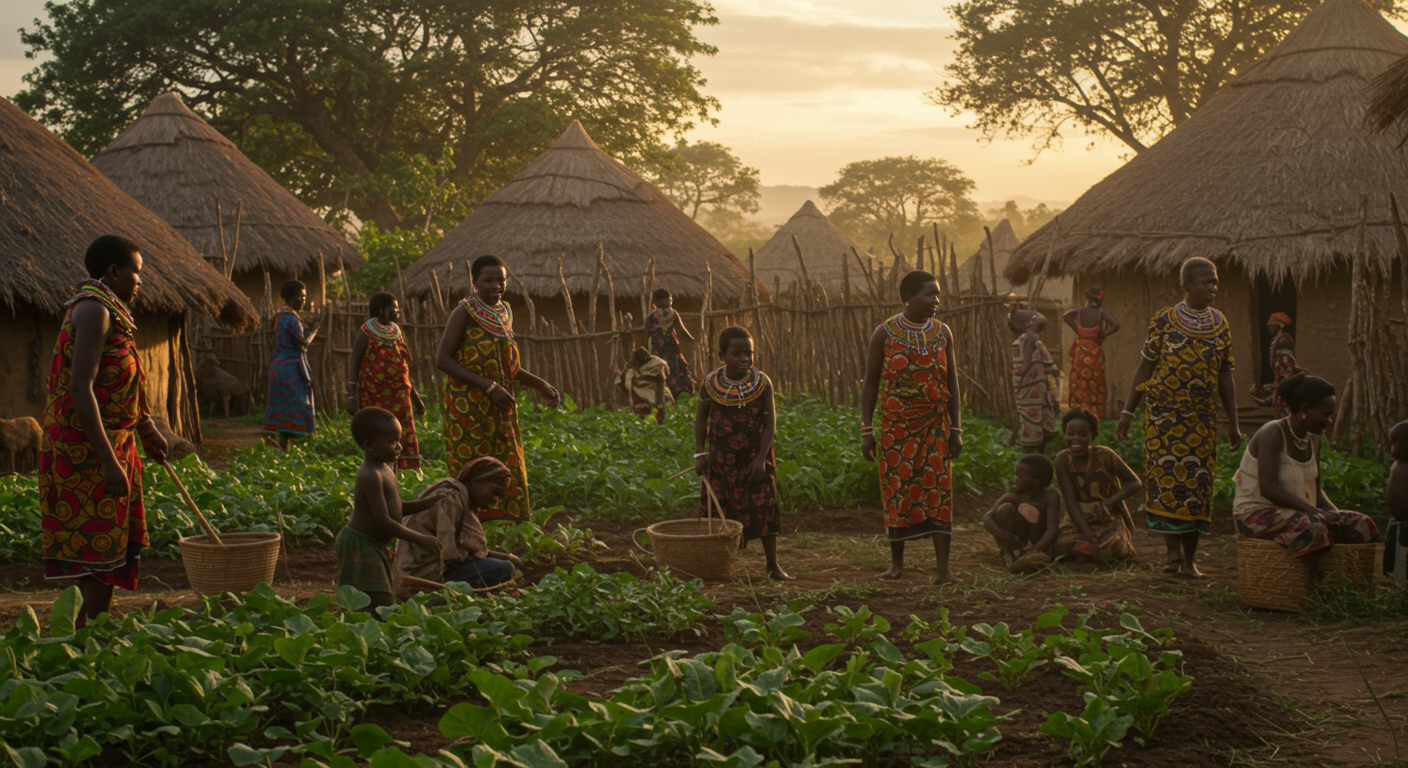Backyard farming is not just a modern sustainability trend—it’s a timeless practice deeply rooted in African village life. Across the continent, communities have cultivated their own food using techniques that are sustainable, communal, and closely aligned with nature. Drawing inspiration from these traditions can transform your backyard into a thriving, nourishing space that honors African knowledge systems and enhances your connection to the land.
Why Traditional African Farming is Relevant Today
- It uses locally adapted methods that require little to no synthetic inputs
- It emphasizes biodiversity and mixed planting
- It promotes self-reliance, seasonal eating, and community resilience
Step 1: Planning Your Layout with Intention Traditional African homesteads often organize farms according to use and season. Apply this principle by zoning your backyard into:
- Vegetable beds for leafy greens like ugu, amaranth, or moringa
- Root zones for yam mounds, sweet potatoes, and cassava
- Herb areas for scent leaf, basil, African pepper, lemongrass
- Small orchard corners for pawpaw, banana, or guava trees
Use natural barriers like woven palm fencing or recycled materials. Include narrow paths for accessibility and water management.
Step 2: Choose Indigenous and Heirloom Crops Planting indigenous crops improves climate resilience and reduces pests. Examples:
- Vegetables: okra, garden eggs, bitter leaf, roselle (zobo)
- Tubers: cocoyam, yam, cassava
- Legumes: cowpeas, groundnuts, bambara nuts
- Fruits: soursop, baobab, African cherry (agbalumo)
Seed saving is also key—just like elders used to preserve seeds in calabashes or earthenware.
Step 3: Practice Intercropping and Companion Planting Rather than monocropping, mimic African intercropping methods:
- Plant maize with pumpkin and beans
- Grow cassava with pepper and okra
- Integrate neem trees or moringa for natural pest control
This method enhances soil fertility, maximizes space, and supports healthy ecosystems.
Step 4: Build Organic Soil with Traditional Composting Create compost pits using kitchen waste, ash, and animal dung. You can layer with dry leaves and food scraps in clay pots or compost trenches. In East Africa, for instance, banana circles are used to compost organic waste while nourishing banana trees.
Mulch using dried grass or palm fronds to conserve water and reduce weeds.
Step 5: Celebrate Harvesting with Culture Harvesting is a moment of celebration in African communities. Mark harvest days with communal meals or cultural rituals. In your home, share produce with neighbors, organize weekend cooking sessions with friends, or donate excess to local shelters.
Build a shaded resting hut or gazebo (using raffia mats or bamboo) as a communal gathering spot or a place to enjoy evening relaxation.
Step 6: Add Artistic and Functional Elements
- Use painted calabashes as watering pots or decor
- Label plant beds in your local language
- Add seating made of upcycled wood or stone slabs
- Hang wind chimes or recycled art made by local artisans
Benefits
- Reduces dependence on store-bought food
- Revives endangered crops and traditions
- Builds a family-friendly outdoor classroom
- Supports physical, emotional, and spiritual well-being
Conclusion By modeling your backyard garden on traditional African villages, you’re not only creating a food source—you’re re-establishing a relationship with culture, ancestry, and the land. Whether you have a small urban yard or a spacious compound, African farming principles can guide you to create a space that feeds, heals, and empowers.



